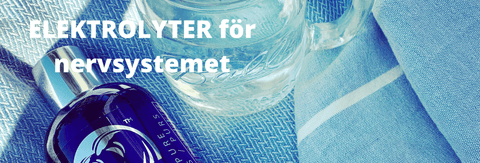In nutrition and medicine, some of these substances are usually meant when talking about electrolytes: magnesium, calcium, potassium, phosphorus, sodium, chloride. But all trace elements and minerals in an ionic solution can be said to be electrolytes. Ions are the particles that make up a mineral salt, free in a solution.
That these ions are available in the right amounts is fundamental for health and can be vital in various disease states.
Cell membranes are gatekeepers
Every cell in the body is surrounded by a membrane. The membrane can be likened to a wall with several gates and watchtowers in it. The guards are ion channels through which electrolytes can pass through, out or in.
There are different types of ion channels. Some channels are controlled by the concentration levels inside and outside the cell. This allows the ions to migrate. Other channels are pumps controlled by electrical voltage changes in the membrane and they require energy to operate.
These electrical voltage changes, among other things, send sodium and potassium ions in and out through the membrane and this sends a nerve signal on from cell to cell.
The body needs to have access to the right balance between the various ions.
Inside the cell, around it and outside it
There is an inherent electrical voltage that lies constantly across the cell membrane. The voltage is maintained by the voltage difference between the ions just on the inside and outside of the membrane. If you remember from biology lessons; the so-called membrane potential .
Then there is another voltage that occurs when ions are pumped in and out through the pumps in the membrane to pass on a nerve signal.
A third place where minerals reside is the area outside the cells, in the so-called extracellular space. It can include the blood, lymph or other fluid outside the cell.
In nerve cells, there should be a higher concentration of potassium inside the cell, but also some outside. If the level of potassium outside the cell is too low, nerve conduction will be slower. It can be felt by muscles becoming weaker and movements taking longer to perform.
If, on the other hand, there is too much potassium outside the cell, less voltage change is required for a nerve signal to occur. Then, for example, you may experience palpitations. The voltage changes are therefore brought about by the movements of the sodium and potassium ions. Other ions also have their tasks both inside and outside the cells.
Stress and our endocrine organs
The excretion and absorption of minerals is regulated by our organs and endocrine glands. Kidneys, adrenal glands, thyroid and parathyroid glands are involved and in control.
Stress affects our organs, our metabolism and our mineral balance.
Certain mineral patterns based on this can be read out over time in, for example, a hair mineral analysis.
Mineral-rich foods
The simplest and most basic thing for well-being may be to start giving the body easily absorbable minerals. Fruits, vegetables and especially berries are rich in potassium. Take a fruit or berry session in the morning or afternoon. Food supplements with berry or fruit powder are easy to mix in water or tea for an invigorating drink.
Start slowly with small doses if you are sensitive and gradually increase the amounts.
Body care with minerals
By using mineral drops for oral use or mineral solutions to lubricate the skin with or to bathe in, you can contribute to your mineral balance. Minerals in ion solution are quickly taken up to muscles and other tissues via the skin. It can help soften stiff joints and muscles.




